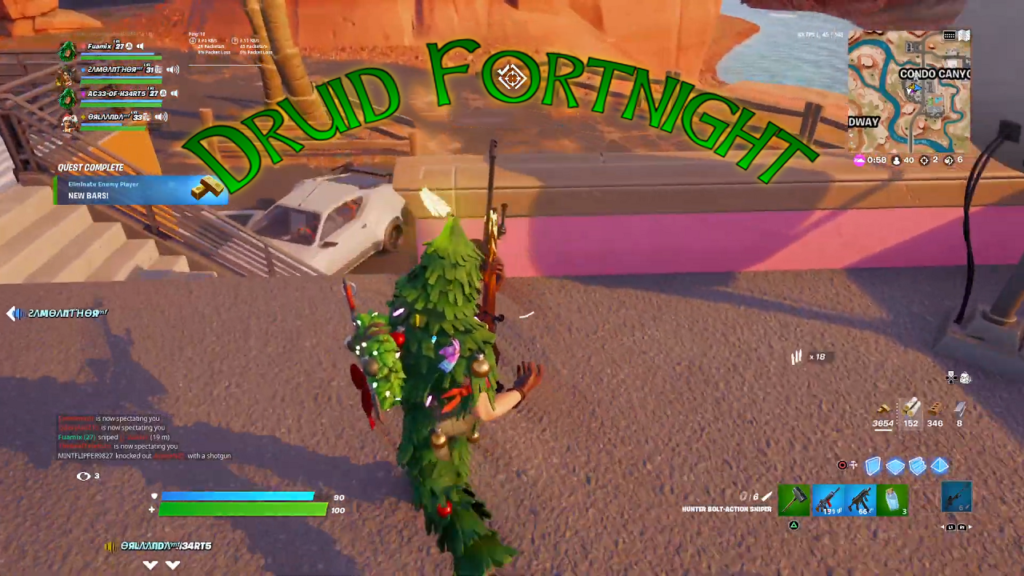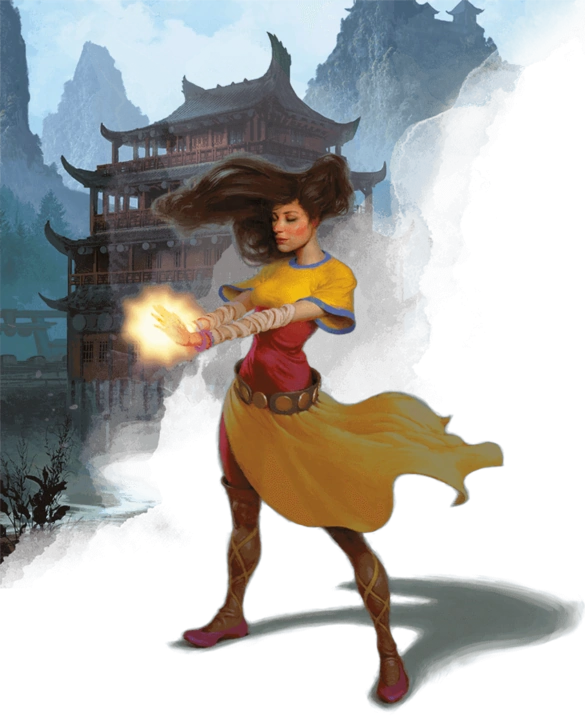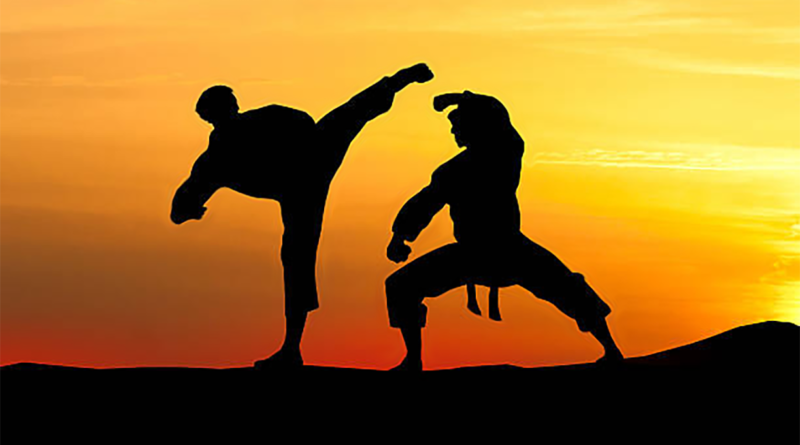D&D 5e: The Troubles With Monk
Hi all! While the Daily SPUF is a video gaming blog through and through, we do occasionally cover other types of games. This includes card games and board games and even tabletop RPGs. I’ve occasionally covered Call of Cthulhu, but I’ve actually been playing Dungeons & Dragons for over a decade, starting with 3rd edition in 2009. So I got the idea to write some articles giving advice for newer players. And then I started with a guide to my favorite class, druid.
Well, that druid guide turned into three different articles…then eight…and now there are fifteen. So apparently I won’t be writing about the entirety of D&D, just the druid. In my defense, it’s easily the most multi-faceted and versatile class in the game, bringing a veritable smorgasboard of options and utilities to the table. So, for the rest of this month, I hope you can look forward to my newest article series: Druid Fortnight!

My goal is twofold; firstly, showcase why I love the druid and find it an engaging, mentally-stimulating class for tackling almost every situation you’ll encounter in D&D. And secondly, provide a ton of useful info for anyone who takes my advice and plays one in their own campaign. But for this starter article, I’d rather discuss the only other class I have strong feelings on: the Monk.
(Note: Most of my experience with this class comes from a Changeling monk I played from levels 1-20 in the “Hoard of the Dragon Queen”, “Rise of Tiamat”, and “Book of the Tarrasque” adventures.)
On the Monk
I really want to like the Monk. I love the motif behind its skillset; an armorless, weaponless martial arts master who can kick ass without any gear. And I have to admit D&D has one of the most viable builds for this character archetype I can think of. You’re mobile, you’re hard to hit, and you can dish out damage like nobody’s business. I’m not here to claim the D&D Monk is unusable, as it’s probably the best variation of Monk the system has ever seen. But there are several core problems with the class’ whole philosophy that drag it down. To boot:
Problem #1: Gear is tied to progression
In D&D, gear is the second-most important form of character progression, behind levels. When monk’s whole shtick is that they don’t need gear, this makes it tough for GMs to grant them things without disrupting the fundamental class fantasy. This is most obvious with magical weapons, which will further put you behind everyone else once all your friends have them. (D&D is also pretty infamous for not having many great magic items for monk.)

Problem #2: EVERYTHING is tied to ki
Extra attacks, stunning strikes, dodges, dashes… Most of monk’s combat abilities require ki to function. And unfortunately ki is a very limited resource, you only get one per level. When those run out, you fall badly behind every other martial class in combat capability. And then most monastic traditions make ki starvation even worse by also requiring ki points to function. Add on that there are no feats, spells, or additional mechanics you can take to increase ki points. (In over 8 years, we’ve only recieved a single magic item which replenishes ki.) Everyone else gets to keep using their cantrips and weapons indefinitely, this fundamental endurance problem seems to be unique to monk and nobody else.
Problem #3: Few Healing or Ranged attacks
Monks have two massive holes in their toolsets. The first is that they’re often low in healing options, but to be honest that’s not unusual for the martial classes, so we can forgive that. (Personally, I loved the Vow of Tranquility subclass for that exact reason, and I’m super bummed it didn’t survive playtesting. Vow of Mercy doesn’t really have the same feel and it ties healing to ki points, which are already a very limited resource.)
The real place monk struggles is with ranged attacks. The only real one you get is Deflect Missiles, which requires somebody to shoot at you first. (Or darts, I guess, which are among the weakest weapons in the game.) Your insane mobility overcomes that problem somewhat, but it forces you to jump through several hoops your teammates don’t have to.
Problem #4: No-gear situations are rare
Hypothetically, monks would rock during a session where the party is imprisoned, stripped of gear, and forced to escape a jail. But I’ve never played a session where the GM did this. Since monks aren’t reliant on their items to succeed, they can also bypass several common environmental roadblocks. They don’t fear rust monsters, or antimagic fields…but I see those so rarely I can’t really consider this a real perk. And finally, they need not worry about their gear being destroyed, but GMs almost never do this. I can’t think of a single time a GM permanently destroyed a player’s weapon because it’s generally considered poor taste. Gone are the Gary Gygax days of destroying equipment as a natural consequence of the risks of adventuring. None of these concepts are in the GM’s mind because, again, gear is a secondary form of character progression.
Ultimately, on a macro-level, the game just doesn’t encourage the situations where Monks uniquely shine. Another example, Monks also excel at verticality, but D&D is played on flat grids so this third-dimensional proficiency rarely comes up.
Problem #5: Nothing to do outside combat
Monks suffer from an extreme lack of noncombat utility. They already need good Dexterity, Wisdom, and Constitution to remain effective. Plus Strength/Intelligence have encumbrance/skillcheck advantages, meaning Monks will likely dump Charisma, giving them little to do during social situations. All of their class features have to do with either movement or ass-kicking, and they don’t have spells. My monk turned into the team’s primary healer after our cleric dropped from the campaign, but that’s because I used the Vow of Tranquility subclass which has since been discontinued. If I hadn’t had that, I would have felt pretty outshined by the Paladin and Sorceror who were outdamaging me while also having high social stats to boot.

Bonus: They both can and can’t use nunchuks
It’s true. According to different official rules, monks either are or aren’t proficient in nunchuks.
Page 41 of the Dungeon Master’s Guide lists Chinese- or Japanese-based counterparts to the typical European weapons. Just in case you’re running a campaign in a more wuxia setting, or simply want an eastern flair to your armament of choice. And nunchuks replace the flail, which is a martial weapon, so monks can’t wield them with proficiency.
However, page 78 of the Player’s Handbook mentions that monks can use nunchuks, calling them a reskin for the club. So which is it? Are nunchuks flails or clubs? (The easiest fix honestly is to replace the DMG nunchuk with a more appropriate weapon, like the meteor hammer. I just thought this was funny. Poor confused monks.)
But despite all this, I still really like the class. After all, most of these problems are about the system, not the monk. Just because it doesn’t fit well into D&D doesn’t mean that I don’t enjoy it as a concept. My biggest recommendation is find a way to fill that ranged-damage hole, as it’s my least-favorite part of the class. I solved it by obtaining an eldtritch claw tattoo, which I highly-recommend for anyone playing Monk. Another option is to take the Magic Initiate feat and grab a ranged spell attack cantrip. My recommendation is produce flame from the Druid spell list, since it’ll scale off your secondary stat Wisdom.
Or you can do what I did and just switch to druid entirely. Which is what this blog will be doing, starting with tomorrow’s article! Hope to see you there!
